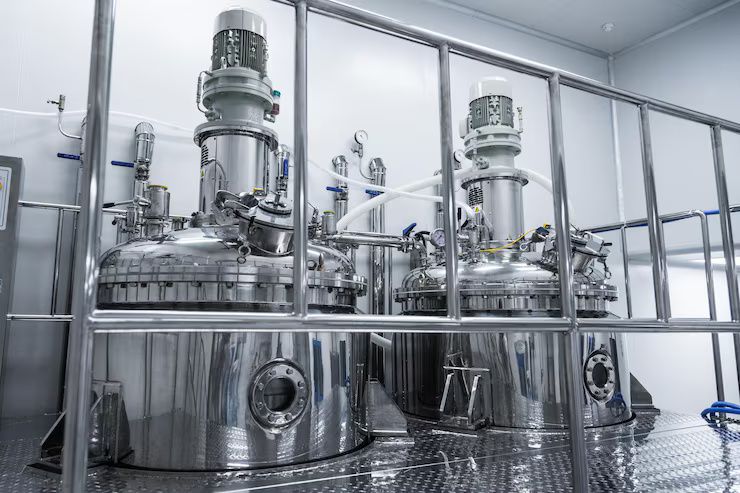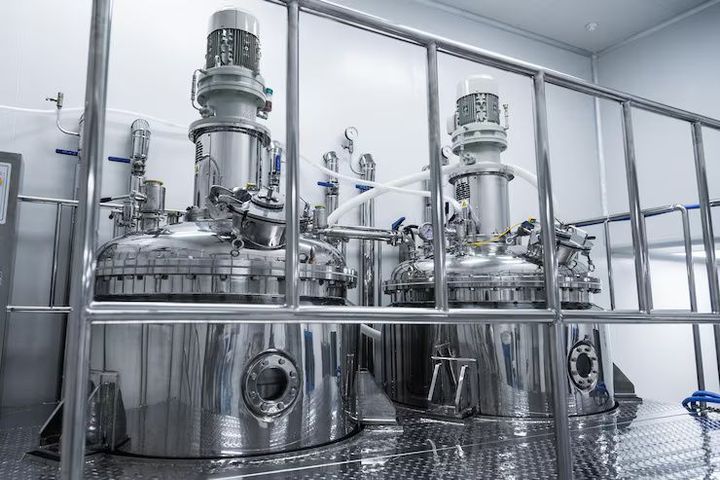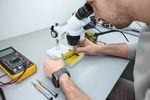The reason this topic exists is straightforward: manufacturing and processing operations often involve fluid flows (water, air, process gases, slurries) that carry contaminants. Without appropriate filtration, these contaminants can cause equipment wear, product quality failures, health or environmental hazards, and regulatory non-compliance.
In simple terms, filtration in industry is a coping mechanism: we accept that inputs and outputs will carry undesirable matter, so we build a system to reduce or remove that matter to acceptable levels.

Importance
Why does industrial filtration matter today, and who does it affect?
-
Worker health and safety: In many industrial facilities, airborne dust, fumes, and mist can impact workers’ respiratory health. Filtration of process air or ventilation air helps mitigate those risks.
-
Equipment performance and reliability: Solid particles or corrosive contaminants in fluids can accelerate wear, clog components, or degrade performance. Filtration protects machinery and extends lifespan.
-
Product quality: In sectors like pharmaceuticals, food & beverage and electronics manufacturing, impurities (in liquids or gases) can compromise product integrity. Filtration is a key enabler.
-
Environmental protection: Many industrial operations generate effluents (liquid waste) or exhaust gases. Filtration helps remove harmful particulates or contaminants before discharge or emission. By doing so, it aids compliance with environmental regulations.
-
Economic efficiency and sustainability: By improving process performance, reducing downtime, and reducing waste or rework, filtration systems support better operational economics. Also, with increasing focus on sustainability, cleaner operations are more important.
In short: industrial filtration matters for companies (to run safely and efficiently), workers (for health protection), the environment (for pollution control) and society (for product safety and industrial sustainability).
Recent Updates
Here are some notable trends and developments in the industrial filtration field over the past year or so:
-
Advanced materials: The global market for industrial filtration is seeing increased adoption of features such as nanofibre filters, ceramic membranes and non-woven filter media. These allow greater resistance to temperature, corrosion or fine particulates.
-
Market growth: For example, one forecast suggests the global industrial filtration market (valued around US$ 36.03 billion in 2024) could reach about US$ 53.81 billion by 2033 (CAGR ~4.6%).
-
Regional growth and emerging demand: Regions such as Asia-Pacific are experiencing faster industrialisation and thus higher demand for filtration systems.
-
Technological shifts: In air-filtration especially, modular, flexible fan filter units (FFUs) and ceiling grid systems are becoming more common, which provide faster installation, easier servicing, and more customisation.
-
Regulatory push: Stronger environmental and workplace health regulations are driving filtration adoption. For example, industries are being required to handle near-zero discharge, or stricter particulate limits in emissions.
These updates show that industrial filtration is evolving—partly driven by innovation, partly by regulation, and partly by changing market dynamics (global supply chains, industrial growth in emerging markets).
Laws or Policies
Industrial filtration is influenced significantly by laws, regulations and government programmes. While the exact rules vary by country, here are general themes and examples:
-
Environmental laws: Many nations regulate emissions of particulate matter and chemical discharges from industrial facilities. For instance, in India, the Central Pollution Control Board (CPCB) enforces the Water (Prevention & Control of Pollution) Act, 1974 and the Air (Prevention & Control of Pollution) Act, 1981, which require industries to control pollutants in water and air.
-
Product and equipment standards: Some countries mandate that filtration devices or components meet certain standards—especially when used in critical industries (food, pharma, etc.). For example, in India a rule (Water Purification System Regulation of Use Rules, 2023) affects larger-scale filters used in industrial/hospital settings.
-
Emission limit guidelines and effluent standards: In the U.S., the Environmental Protection Agency (EPA) issues effluent limitation guidelines (ELGs) that set technology-based performance standards for industrial discharges. Filtration systems often form part of the means of compliance.
-
Workplace health and safety regulation: In many jurisdictions, air quality standards in industrial workplaces mandate filtration of ventilation or process air to protect workers. Filtration systems are a key part of achieving compliance.
For organisations in any given country, it is important to check the local regulatory environment, including national laws, state/regional rules, and industry-specific standards (for example in pharmaceuticals or food processing).
Tools and Resources
Here are some helpful tools, calculators, websites and services that relate to industrial filtration:
-
Industry market reports: Platforms offering in-depth analyses of industrial filtration markets (growth forecasts, segmentation by type, region) — e.g., Future Market Insights, Grand View Research.
-
Equipment selection guides: Many filter manufacturers or specialist engineering sites publish guides on how to select filters based on media type, flow rate, particle size, process fluid properties. (For example: “Understanding Industrial Filtration Systems: A Buyer’s Guide”.)
-
Regulatory databases: National environmental agencies (such as CPCB in India, EPA in the U.S.) provide searchable databases of emissions/effluent standards, industry-specific guidelines.
-
Online calculators/templates: For example, tools to compute required filtration area, pressure drop, flow rate vs. filter size, or life-cycle cost of filter media. (While a specific link isn’t provided here, engineering communities and filter-media vendors often supply downloadable spreadsheets.)
-
Technical associations and standards bodies: Organisations such as American Society of Heating, Refrigerating and Air‑Conditioning Engineers (ASHRAE) publish standards relevant to air filtration systems.
-
Maintenance and monitoring services: Many industrial filtration systems now include monitoring of differential pressures, flow rates, filter media life-cycle. Some vendors offer condition-monitoring platforms (IoT-enabled) to help schedule replacements and optimise efficiency.
Using a combination of these resources can help engineers, plant managers and compliance professionals design, maintain and optimise filtration systems effectively.
FAQs
Q1: What are the main types of industrial filtration in use?
A: The principal categories are liquid filtration (for fluids such as water, process liquids, slurries) and air or gas filtration (for ventilation, exhaust, process gases). Within each category, the filter media (e.g., non-woven fabric, metal mesh, active carbon, membrane) and the product type (filter press, cartridge filter, bag filter, HEPA/ULPA units) vary depending on the application.
Q2: How do I decide what kind of filter media to use?
A: The choice of filter media depends on several factors: the nature of the contaminant (particle size, chemistry), the fluid (liquid vs air, viscosity, temperature, corrosiveness), desired retention efficiency, allowable pressure drop, and maintenance or replacement cost. Non-woven fabrics are increasingly common because of versatility and cost-effectiveness.
Q3: How often should industrial filters be maintained or replaced?
A: Maintenance and replacement intervals depend on the specific system, contamination load, filter design and operational conditions. Many systems monitor differential pressure across the filter or flow reduction to signal when the filter media should be cleaned or replaced. Using condition-monitoring tools (such as IoT sensors) can improve maintenance planning.
Q4: What are the biggest challenges with industrial filtration today?
A: Some key challenges include: increasing regulatory requirements (e.g., lower allowable emissions or effluent levels), growing demand for higher purity (especially in pharmaceuticals or electronics), energy efficiency (filtration systems can contribute to pressure drop and increased energy use), and integrating monitoring/automation for maintenance optimisation.
Q5: What is the typical cost benefit of installing a more advanced filtration system?
A: While specific numbers depend on the case, benefits generally include reduced downtime, lower maintenance or equipment repair cost, better product yield/quality (thereby reducing waste), and improved compliance (reducing risk of fines or shutdowns). Over time the improved efficiency or longevity may offset the higher upfront cost of advanced filter media or monitoring systems.
Conclusion
Industrial filtration is a foundational but often under-appreciated element of modern manufacturing and processing operations. It serves multiple key functions: protecting workers, safeguarding equipment, ensuring product quality, controlling emissions and facilitating sustainability. As industrialisation expands globally and regulatory and product demands become ever more stringent, the role of effective filtration systems only grows in importance.
By staying abreast of recent innovations (such as advanced media, modular systems, IoT monitoring), understanding relevant laws, and utilising the right tools and resources, organisations can optimise their filtration strategies to meet both operational and regulatory demands. For any facility dealing with fluids or gases under industrial conditions, filtration isn’t simply an add-on—it’s a central part of ensuring long-term performance, safety and compliance.







